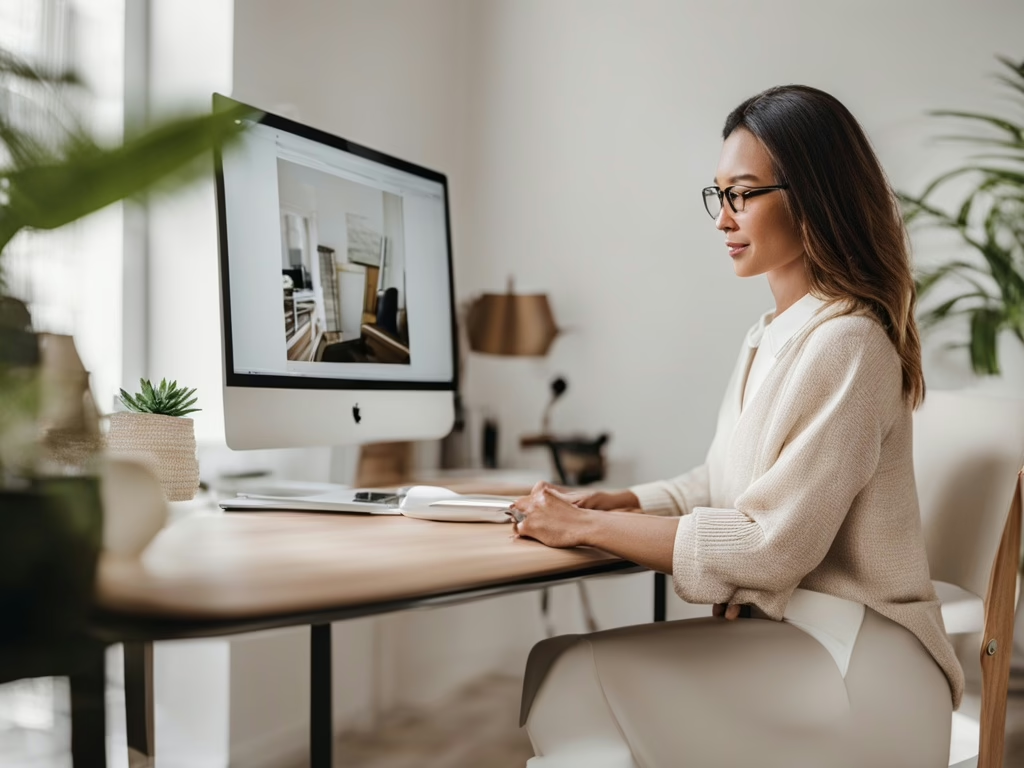
A Step-by-Step Breakdown of the E-Design Process
The E-Design process is transforming the way designers work—offering flexible, accessible, and efficient design solutions entirely online. Whether you’re an aspiring interior designer or a seasoned stager expanding your services, understanding the E-Design process is crucial for success.
1. Client Inquiry and Discovery Phase
The E-Design process begins with a discovery phase where the client initiates contact and provides project details.
- Clients fill out a questionnaire outlining goals, budget, style, and room function.
- Designers request measurements, photos, and inspiration boards.
- A discovery call or email exchange clarifies the scope and expectations.
2. Proposal and Service Agreement
After gathering information, the designer prepares a custom proposal.
- Outline of services, deliverables, and project timeline.
- Cost estimate based on room size, complexity, and scope.
- Service agreement and invoice are sent for approval and payment.
3. Concept Development & Style Board
Once the agreement is signed, concept development begins.
- The designer creates a mood board or style board to visualize the look and feel.
- Style board includes color palette, textures, and reference furnishings.
- The client approves or requests revisions before moving forward.
4. Floor Plan and Space Planning
In this phase of the E-Design process, the designer creates a layout that ensures optimal flow and functionality.
- Scaled floor plan based on client measurements.
- Furniture placement to maximize space and balance.
- Any traffic flow or functional concerns are addressed.
5. Final Design Presentation
This phase brings the vision to life with detailed visuals and shopping recommendations.
- Final design board with product images and links.
- Design notes, styling tips, and implementation instructions.
- Optional 3D rendering or elevations depending on package.
6. Shopping List and Product Sourcing
An organized and clickable shopping list is created for the client.
- Links to all items with pricing and sources.
- Alternatives or budget options if desired.
- Designer may offer trade discounts or affiliate links.
7. Client Implementation and Support
Once the client receives their E-Design package, they are ready to begin setup.
- The client purchases the items and arranges installation.
- Some designers offer follow-up support or styling sessions.
- Clients share photos of their finished space for designer feedback.
Final Thoughts on the E-Design Process
Expert Tip: In our Virtual Interior Design Course, students complete an E-Design project from start to finish, giving them practical experience with every phase of the process.
The E-Design process allows designers to expand their reach and serve clients remotely with creative, customized design solutions. Whether you’re new to virtual design or scaling your services, mastering the E-Design process can grow your business and provide flexibility for both you and your clients.
For more tips and support to help you start and grow your Interior Design or Home Staging Business, join our private Facebook Group today: The Interior Design/Home Staging Business Incubator.
Interested in pursuing a career in Interior Design? Check out The Academy of Home Staging and Design for accredited certification and courses in Home Staging and Interior Design. Our experienced instructors provide personalized support to help you achieve your dreams in the design industry. Download our course pamphlet today and Be Bold, Design Your Life!

